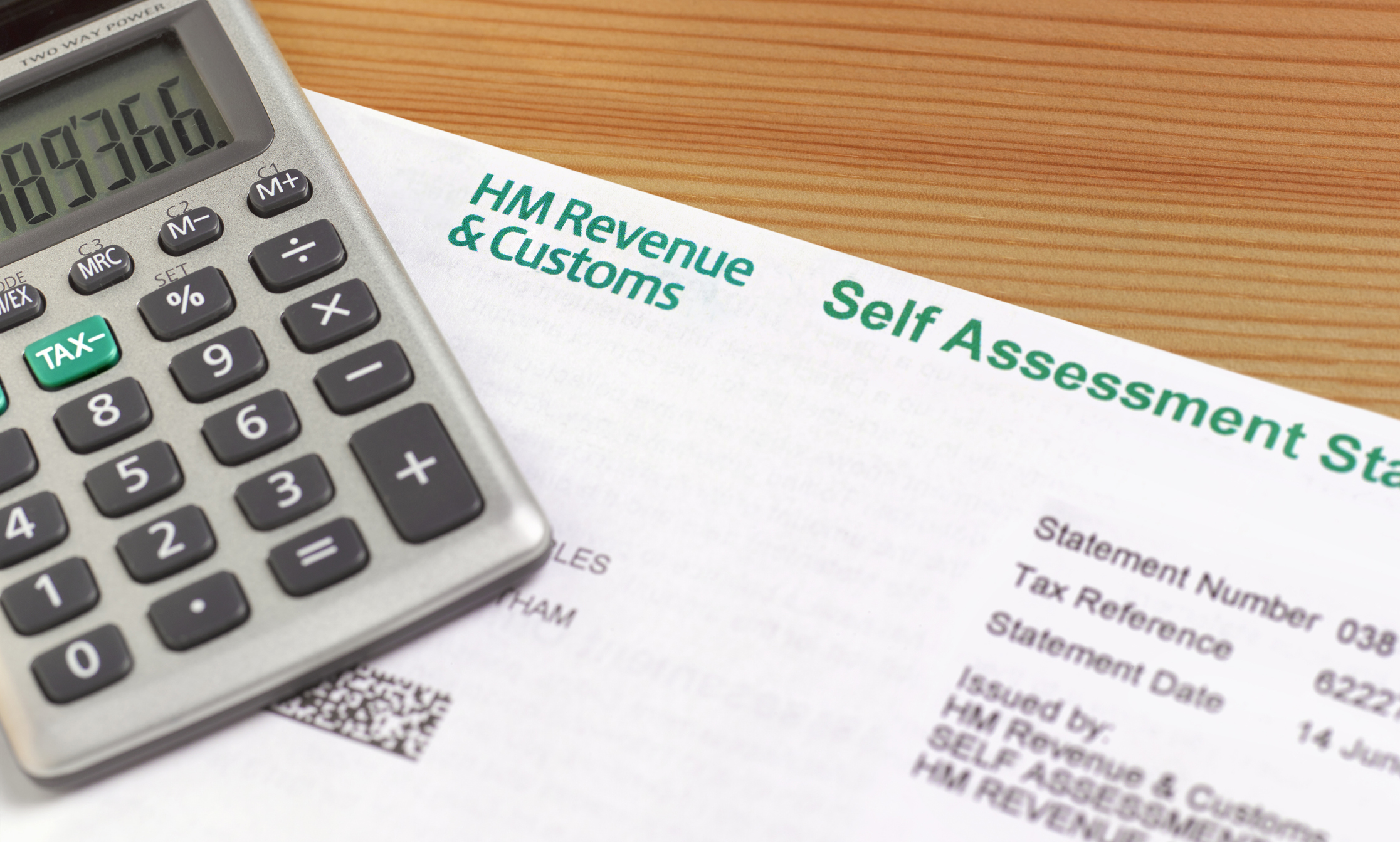How to file a self-assessment tax return
Filing a tax return is one the the most-hated jobs, but getting it in early can alleviate stress and reduce the risk of fines. We share our step-by-step guide.


You might think self-assessment tax returns are only for the self-employed, landlords and high-net-worth individuals, but more people than ever have had to complete one in recent years.
Fiscal drag is largely to blame, thanks to frozen tax thresholds.
The dividend and capital gains tax allowances have also been slashed twice since 2022, meaning those with investments held outside an ISA will find themselves paying more tax.
MoneyWeek
Subscribe to MoneyWeek today and get your first six magazine issues absolutely FREE

Sign up to Money Morning
Don't miss the latest investment and personal finances news, market analysis, plus money-saving tips with our free twice-daily newsletter
Don't miss the latest investment and personal finances news, market analysis, plus money-saving tips with our free twice-daily newsletter
High interest rates could also mean some savers find themselves exceeding the annual savings allowance, resulting in a tax bill on their savings interest, if earned outside an ISA.
While the final tax return deadline is still a few months away – 31 January 2026 for those who file online – it is worth getting your paperwork in order early. If you want to file by post, you only have until 31 October 2025.
Earlier this year, a record 299,419 taxpayers gave themselves peace of mind by filing their return in the first week of the new tax year, according to HMRC. There are benefits to filing early, including the ability to pay your tax bill in instalments.
“Getting that return finished early can be an effective way to keep a personal budget on track. No one wants to be hit with a large tax bill at the end of January, just weeks after the extra expense that comes with the festive period,” said Alice Haine, personal finance analyst at investment platform Bestinvest.
If you want to make the process as easy as possible, another top tip is to keep hold of important paperwork throughout the year. This includes personal financial records, and sales and business receipts if you work for yourself.
Also remember that each tax return looks at the previous tax year, so the return you submit before the deadline on 31 January 2026 will cover the 2024/25 tax year.
How to file a self-assessment tax return: step-by-step guide
Filing a tax return can feel like a daunting task, but breaking it down into different stages helps. These are the key steps you need to take and the deadlines you should note down in your calendar.
1. Register with HMRC
If you haven’t filed a tax return before, the first thing you need to do is register with HMRC. You also need to do this if you registered with HMRC in previous years, but didn’t complete a tax return last year.
The registration deadline is earlier than the filing deadline. You need to have registered by 5 October.
Once you have registered, you will receive your Unique Taxpayer Reference number. This can take up to 10 working days to receive by post, but you can usually see it sooner through the HMRC app or via your online HMRC account.
If you completed a tax return last year but don’t believe you need to do one this year, you need to let HMRC know as soon as possible so it can review your request.
2. Gather relevant documents
The tax return form asks for some personal information such as your name, address, date of birth, National Insurance number, 10-digit Unique Taxpayer Reference number, and your employer reference code (if you have one).
You should also collect any relevant documents and have them to hand when filling out the form. These could include your P60 end-of-year tax statement, your P45 if you have left a place of work, payslips, bank statements, student loan statements, and any investment account statements.
HMRC has a guide on the types of records you should keep, but the exact requirements will depend on your circumstances and why you are filing a tax return in the first place. For example:
- Those who run a business or work for themselves will need records of any sales, business receipts, purchases, expenses and so on.
- Those who are paying tax on savings interest will need bank statements from their savings account, or alternatively an annual certificate of interest.
- Those who are claiming deductions like gift aid should hang onto any records of charitable donations.
- Those who are claiming higher or additional-rate tax relief on pension contributions made in a ‘relief at source’ scheme like a SIPP should keep hold of any pension statements.
These are just a few examples, but it is generally a good idea to keep organised records of any financial documents you receive throughout the year. The taxman expects you to keep records for at least 22 months after the end of the tax year in question.
You shouldn’t send any receipts, accounts or paperwork to HMRC unless the taxman explicitly asks for them, but you will need the records to hand to help you fill out the relevant sections of the form.
3. Complete the form
The tax return form is divided into several sections which ask you to detail:
- Personal information and contact details
- Any income you received (e.g. through interest, dividends or your pension)
- Any tax relief for which you are eligible (e.g. pension tax relief and gift aid)
- Student loan repayments
- Any money you owe as a result of the high income Child Benefit charge
- Any marriage allowance you would like to transfer to your spouse or civil partner
Depending on your circumstances, you may need to complete some separate supplementary pages. Some examples include those who are self-employed, those who receive foreign income or income from a UK property they rent out, and those who have realised capital gains.
The simplest way to file a tax return is to do it online, but the PDF version of the paper form can be found on the government website. This gives a good sense of the sort of information you will need to provide.
4. File your completed tax return form
Once you have completed the form, file your tax return. HMRC will then calculate how much tax you owe. If you file online, you can see it in your online account. If you do a paper return, HMRC will send your calculation by post.
The deadline to file a paper tax return (i.e. by post) is 31 October. Those who file online have until 31 January.
5. Pay your tax bill
Once you have submitted your tax return, make sure to pay your tax bill by the 31 January deadline. You can pay online via the government website, or through the HMRC app. HMRC says paying through the app takes “less than a minute with immediate confirmation of payment”.
Late filers are charged an initial £100 penalty for missing the deadline by even one day (i.e. 1 February). After three months (1 May), you get hit with additional daily penalties of £10, up to a maximum of £900.
After six months, a further penalty applies – either 5% of the tax due or £300, whichever is greater. The same penalty (5% or £300) applies again once you are 12 months late.
There are also penalties for paying your bill late, even if you filed on time. These include 5% of the unpaid tax at 30 days, six months and 12 months. Interest is also charged at an eyewatering rate of 8% (base rate plus 4%).
If you are struggling to pay your tax bill, you might be able to agree a payment plan with HMRC, as long as you owe £30,000 or less.
When thinking ahead to next year, consider filing your tax return early. One of the benefits is that this allows you to set up a budget payment plan to make weekly or monthly direct debit payments towards your bill.
How to get help with filing your self-assessment tax return
HMRC says the quickest way to get help when filing your tax return is to use its online tools or chat with its digital assistant. As this is a chatbot, it should be able to help with standard queries but may struggle with more complex requests.
If the digital assistant is unable to help, you can ask to speak to a HMRC adviser if one is available.
Alternatively, you can call HMRC’s helpline on 0300 200 3310 if you are based in the UK. If you are located outside of the UK, call +44 161 931 9070 instead. The opening times are Monday to Friday, 8am to 6pm.
If your tax affairs are complex, it could be worth using an accountant. Bear in mind that you may need to give them some notice, so it is worth doing this well ahead of the 31 January deadline each year.
Who needs to file a self-assessment tax return?
Not everyone needs to file a tax return, but it is important to familiarise yourself with the criteria. A common reason for falling foul of the taxman is simply not knowing that tax was due.
If your only source of income is your salary and you are not self-employed, then you probably don’t need to do anything. Income tax will be deducted from your salary before you receive it through a process called ‘pay as you earn’ (PAYE).
Most pensioners won’t need to file a tax return either, if their only source of income is their state and private pensions. The state pension is currently lower than the personal allowance. If private pension income tips you over the £12,570 threshold, income tax will usually be deducted through PAYE.
Where it gets more complex is if you have other sources of wealth and income.
For example, if you earn income from a second home, a business, savings and investments held outside of an ISA, or another source, then it is likely that you will need to file a tax return. The same is true if you are self-employed. We take a closer look at the rules.
Business owners and the self-employed
If you run your own business or work for yourself, you will need to file a tax return. This becomes a requirement once you earn more than £1,000 (before taking off anything you can claim tax relief on). You will also need to complete a tax return if you are a partner in a business.
Tax on savings held outside an ISA
Most people can earn a certain amount of interest on their savings without having to pay any tax at all. However, with interest rates having risen to higher levels in recent years, you might be surprised at how quickly you can exceed this threshold.
A basic-rate taxpayer with a 5% savings account could become liable for a tax bill once their savings pot hits £20,000, if the money is held outside of an ISA. Any savings held within an ISA are tax-free, regardless of the amount of interest you earn.
Rules for savings held outside an ISA
- If you are a basic-rate taxpayer, then you are entitled to earn up to £1,000 in tax-free interest. This is called the personal savings allowance. This falls to £500 for higher-rate taxpayers, while additional-rate taxpayers aren’t entitled to any personal savings allowance at all.
- You can also use your personal allowance (£12,570) to earn interest tax-free, if you haven’t already used it up on your wages, pension, or other income.
- There is an additional allowance of up to £5,000 if you are a low earner, also known as the starting rate for savings. You will only be entitled to the full amount if you earn less than £12,570, but will still qualify for some of it up to £17,570.
Once you exceed these thresholds, you will need to file a tax return.
Tax on investments
Most investments are subject to income and capital gains tax if they are held outside an ISA. The capital gains and dividend allowances are currently £3,000 and £500. It is worth remembering that capital gains tax is paid on investments once they have been sold.
You are able to deduct any losses to help lower your capital gains tax bill. You do not have to report losses straight away, and can claim them up to four years after the end of the tax year when you disposed of the asset.
Tax on rental income
If you own a property that you rent out, you will probably need to pay tax on any rental income. The rules vary depending on whether you own the property personally, or run a property business.
The following rules apply if you own the property personally:
- You can claim the first £1,000 of rental income tax-free, known as the property allowance. However, if you claim this, you cannot claim a deduction for your expenses – more on that below.
- If you earn between £1,000 and £2,500 a year, you need to contact HMRC.
- If you earn more than £2,500 after allowable expenses, or more than £10,000 before allowable expenses, you need to complete a tax return. Allowable expenses include things like letting agents’ fees, maintenance and repair costs, ground rent, and gardening fees.
- Rental income is taxed at the same rate you pay on other forms of income, such as your salary. This means you can use your personal allowance to cover some of it, if you haven’t already exhausted it elsewhere (e.g. through earnings from your workplace).
If you have multiple properties and run them as a buy-to-let company, there are different rules. The rental income should be counted in the same way as any other business income. Further information can be found on the government website.
Parents who pay the high income Child Benefit charge
If you receive Child Benefit but aren’t eligible for the full amount, then you need to return the excess by completing a tax return.
The threshold for means testing Child Benefit payments is currently £60,000. If you or your partner’s salary exceeds this amount (individually, not jointly), you will have to pay back 1% for every £200 of income you earn over the threshold.
You no longer qualify for any Child Benefit once you cross £80,000.
The government’s Child Benefit calculator can help you understand how much you need to repay, if any.
The good news is that the system will soon be changing, allowing families to pay the high income Child Benefit charge through their PAYE tax code instead, if they prefer. This will allow some families to avoid filing a tax return.
Those making £1,000 through side hustles like eBay or Vinted
If you make a bit of money by selling things on sites like eBay, Etsy or Vinted, you may need to declare this income – but the side hustle tax rules are complex:
- Firstly, you only need to declare the income if you make more than £1,000 through the side hustle in the tax year.
- Secondly, if you are selling personal items for less money than you originally paid, you do not need to declare the income – even if the annual total exceeds £1,000. Essentially, this means income tax will only be due if you are deemed to be trading.
- When it comes to personal items, the only exception is if you sell an item for more than £6,000 and make a profit. At this point, you probably won’t have to pay income tax but capital gains tax could be due. Further information is provided on the government website.
Those whose activities count as trading should be careful to stick to the rules. Alastair Douglas, chief executive at fintech company TotallyMoney, said: “While you might not think the taxman will catch up with you, these platforms are required to pass your information on if you’ve sold more than 30 items or earned more than £1,700.”
When filing your tax return, remember that you can list some expenses to help reduce the size of your bill. This includes things like the postage and envelopes you paid for when sending the products to the buyer. Remember to hold onto any evidence in case you need to prove these expenses.
Other untaxed income
You may also need to complete a tax return if you receive any other untaxed income, such as tips and commission or foreign income. If you are still not sure whether you need to complete a tax return, you can use HMRC’s online tool to help.
Does the taxman owe you money?
Sometimes, it is in your best interest to file a tax return, even if you don’t owe HMRC money. For example, if you are a higher or additional-rate taxpayer making contributions to a pension scheme, HMRC could actually owe you money in the form of pension tax relief.
All savers get the 20% basic-rate tax back automatically. However, if you are a higher or additional-rate taxpayer, you may need to claim the rest back yourself, depending on the type of pension scheme you are in:
- If you are in a ‘net pay’ pension scheme where pension contributions are made before you are taxed, you will automatically receive any tax relief you are owed without having to claim it.
- However, if you are in a ‘relief at source’ pension scheme (where contributions are made after tax is deducted), you may need to take action. Self-invested personal pensions (SIPPs) usually fall into this category.
Likewise, if you have started drawing from your pension pot and HMRC isn’t applying the correct tax code on your pension income (this is very common), then you can complete a tax return to claim a refund. There are other ways of doing this too – we share further details in our guide on pension tax refunds.
What are ‘payments on account’?
Some people have to pay through a system known as ‘payments on account’. This applies to you if the amount of tax you owed last year was £1,000 or more, or if you didn’t pay at least 80% through your tax code.
Through this system, you pay your tax bill in advance in two instalments. The instalments you pay are just estimates, based on how much tax you paid in the previous year.
If you fall under this system, your tax bill for the 2024/25 tax year should theoretically be paid already. The first instalment would have been paid by 31 January 2025, and the second by 31 July 2025.
As these figures are just estimates, it is possible that there will still be a balance for you to pay once you have submitted your tax return form. Alternatively, HMRC may owe you money.
If you have underpaid, you will need to make a ‘balancing payment’ by midnight on 31 January 2026. If you have overpaid, you will be able to claim a tax refund through the government website.
Your first instalment for the 2025/26 tax year will also be due on 31 January 2026.
Get the latest financial news, insights and expert analysis from our award-winning MoneyWeek team, to help you understand what really matters when it comes to your finances.
Katie has a background in investment writing and is interested in everything to do with personal finance, politics, and investing. She previously worked at MoneyWeek and Invesco.
-
 Football fans issued warning over ticket scams ahead of 2026 World Cup
Football fans issued warning over ticket scams ahead of 2026 World CupSantander customers lost more to football scams in the first six months of 2025 compared to the same period in 2024, when total losses surged due to the Euros
-
 Nationwide fined £44 million over “inadequate” anti-money laundering systems
Nationwide fined £44 million over “inadequate” anti-money laundering systemsFailings in Nationwide’s financial crime processes between October 2016 to July 2021 meant one criminal was able to deposit £26 million from fraudulent Covid furlough payments in just eight days.
